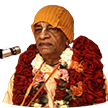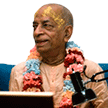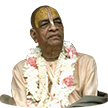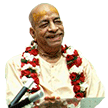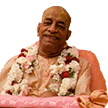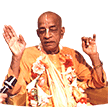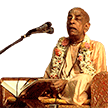Avatara - an essential subject: Difference between revisions
(Created page with "Category:Essential Subjects <!----------------------- edit below this line -----------------------> <!------------------------ begin introduction text below --------------...") |
(Vanibot #0041: Moves Choose Another box to the end) |
||
| Line 2: | Line 2: | ||
<!----------------------- edit below this line -----------------------> | <!----------------------- edit below this line -----------------------> | ||
<!------------------------ begin introduction text below ------------------------> | <!------------------------ begin introduction text below ------------------------> | ||
"I worship the Supreme Personality of Godhead, Govinda, who is the original person-nondual, infallible, and without beginning. Although He expands into unlimited forms, He is still the original, and although He is the oldest person, He always appears as a fresh youth. Such eternal, blissful and all-knowing forms of the Lord cannot be understood by the academic wisdom of the Vedas, but they are always manifest to pure, unalloyed devotees." (Bs. 5.33) The Brahma-saṁhitā describes the avatāras. Indeed, all the avatāras are described in the authentic scriptures. No one can become an avatāra, or incarnation, although this has become fashionable in the age of Kali. The avatāras are described in the authentic scriptures (śāstras), and therefore before one risks accepting a pretender as an avatāra, one should refer to the śāstras. The śāstras say everywhere that Kṛṣṇa is the original Personality of Godhead and that He has innumerable avatāras, or incarnations. | |||
Srila Prabhupada's books, lectures, conversations and letters offer a comprehensive presentation of this essential subject as seen in the Vaniquotes '''[[Vaniquotes:Category: | Srila Prabhupada's books, lectures, conversations and letters offer a comprehensive presentation of this essential subject as seen in the Vaniquotes '''[[Vaniquotes:Category:Avatara|Avatara]]''' category. An introduction from his books is given below in the following 13 quotes. | ||
<!-------- end introduction text and don't touch next three lines ---------> | <!-------- end introduction text and don't touch next three lines ---------> | ||
---- | ---- | ||
== Quotes from Srila Prabhupada's books == | == Quotes from Srila Prabhupada's books == | ||
<!----------------- edit quote boxes below this line -----------------> | <!----------------- edit quote boxes below this line -----------------> | ||
{{VaniQuotebox| | {{VaniQuotebox|all the avataras are described in the authentic scriptures. No one can become an avatara, or incarnation, although this has become fashionable in the age of Kali| All the avatāras are described in the authentic scriptures. No one can become an avatāra, or incarnation, although this has become fashionable in the age of Kali. The avatāras are described in the authentic scriptures (śāstras), and therefore before one risks accepting a pretender as an avatāra, one should refer to the śāstras. The śāstras say everywhere that Kṛṣṇa is the original Personality of Godhead and that He has innumerable avatāras, or incarnations. '''(Śrīmad-Bhāgavatam 7.10.42)'''}} | ||
{{VaniQuotebox| | {{VaniQuotebox|Describing the incarnations and their symptoms, the Laghu-bhagavatamrta has stated that when Lord Krsna descends to conduct the creative affairs of the material manifestation, He is an avatara, or incarnation|Describing the incarnations and their symptoms, the Laghu-bhāgavatāmṛta has stated that when Lord Kṛṣṇa descends to conduct the creative affairs of the material manifestation, He is an avatāra, or incarnation. The two categories of avatāras are empowered devotees and tad-ekātma-rūpa (the Lord Himself). An example of tad-ekātma-rūpa is Śeṣa, and an example of a devotee is Vasudeva, the father of Lord Kṛṣṇa. '''(Caitanya-caritāmṛta, Ādi-līlā 5.83)'''}} | ||
{{VaniQuotebox| | {{VaniQuotebox|Each and every avatara, or incarnation of the Lord, has a particular mission, and they are all described in the revealed scriptures| There are certain restrictive rules and regulations regarding animal sacrifice for particular purposes in the Vedas, people of demonic tendency still took to animal sacrifice without reference to the Vedic principles. Lord Buddha appeared to stop this nonsense and to establish the Vedic principles of nonviolence. Therefore each and every avatāra, or incarnation of the Lord, has a particular mission, and they are all described in the revealed scriptures. '''(Bhagavad-gītā 4.7)'''}} | ||
{{VaniQuotebox| | {{VaniQuotebox|In this way (by imitating Haridas Thakura) the heart is again filled with dirty things and becomes harder and harder, like that of a materialist. Gradually one desires to become a reputed devotee or an avatara (incarnation)| A neophyte devotee is certain to be attacked by other material desires as well, namely desires for women and money. In this way the heart is again filled with dirty things and becomes harder and harder, like that of a materialist. Gradually one desires to become a reputed devotee or an avatāra (incarnation). '''(Caitanya-caritāmṛta, Madhya-līlā 12.135)'''}} | ||
{{VaniQuotebox| | {{VaniQuotebox|Krsna is the source of all avataras, and therefore all the different features of the different avataras are present in Krsna|Kṛṣṇa is the source of all avatāras, and therefore all the different features of the different avatāras are present in Kṛṣṇa. When Kṛṣṇa incarnates, all the features of other incarnations are already present within Him. Other incarnations are partial representations of Kṛṣṇa, who is the full-fledged incarnation of the Supreme Being. It is to be understood that the Supreme Being, whether appearing as śukla, rakta or pīta (white, red or yellow), is the same person. When He appears in different incarnations, He appears in different colors. '''(Śrīmad-Bhāgavatam 10.8.13)'''}} | ||
{{VaniQuotebox| | {{VaniQuotebox|Lord Krsna is the primeval Lord, the fountainhead of all avataras|There are various kinds of avatāras, such as puruṣāvatāras, guṇāvatāras, līlāvatāras, śakty-āveśa avatāras, manvantara-avatāras and yugāvatāras—all appearing on schedule all over the universe. But Lord Kṛṣṇa is the primeval Lord, the fountainhead of all avatāras. Lord Śrī Kṛṣṇa descends for the specific purpose of mitigating the anxieties of the pure devotees, who are very anxious to see Him in His original Vṛndāvana pastimes. Therefore, the prime purpose of the Kṛṣṇa avatāra is to satisfy His unalloyed devotees. '''(Bhagavad-gītā 4.8)'''}} | ||
{{VaniQuotebox|No one should be accepted as an avatara unless he is referred to by scriptures. It is not a fact that the Lord appears only on Indian soil. He can manifest Himself anywhere and everywhere, and whenever He desires to appear|No one should be accepted as an avatāra unless he is referred to by scriptures. It is not a fact that the Lord appears only on Indian soil. He can manifest Himself anywhere and everywhere, and whenever He desires to appear.. '''(Bhagavad-gītā 4.7)'''}} | |||
{{VaniQuotebox|Sometimes avatara is understood to refer to an incarnation who assumes a material form of flesh and bone, but actually avatara refers to one who descends from higher regions|The Lord descends from His abode to this world, and therefore He is called avatāra, which means "one who descends." Sometimes avatāra is understood to refer to an incarnation who assumes a material form of flesh and bone, but actually avatāra refers to one who descends from higher regions.. '''(Śrīmad-Bhāgavatam 3.19.31)'''}} | |||
{{VaniQuotebox|Srimad-Bhagavatam refers to man-made dharma as kaitava-dharma, cheating religion. The Supreme Lord sends an avatara (incarnation) to teach human society the proper way to execute religious principles. Such religious principles are bhakti-marga| The Supreme Lord sends an avatāra (incarnation) to teach human society the proper way to execute religious principles. Such religious principles are bhakti-mārga. As the Supreme Lord Himself says in Bhagavad-gītā: sarva-dharmān parityajya mām ekaṁ śaraṇaṁ vraja (BG 18.66). '''(Śrīmad-Bhāgavatam 5.3.20)'''}} | |||
{{VaniQuotebox|The devotees of Lord Krsna are very much attracted by the sankirtana movement of Lord Caitanya. This avatara of the Lord does not kill the miscreants, but delivers them by His causeless mercy| Lord Caitanya as the incarnation of Kṛṣṇa, the Personality of Godhead, is described secretly but not directly in the confidential parts of the revealed scriptures, such as the Upaniṣads, Mahābhārata and Bhāgavatam. The devotees of Lord Kṛṣṇa are very much attracted by the saṅkīrtana movement of Lord Caitanya. This avatāra of the Lord does not kill the miscreants, but delivers them by His causeless mercy. '''(Bhagavad-gītā 4.8)'''}} | |||
{{VaniQuotebox|The form of the Lord as worshiped in the temples is called arca-vigraha or arcavatara, the worshipable form, the Deity incarnation. This facility is offered to neophyte devotees so that they can see the real form of the Lord face to face|The form of the Lord as worshiped in the temples is called arca-vigraha or arcāvatāra, the worshipable form, the Deity incarnation. This facility is offered to neophyte devotees so that they can see the real form of the Lord face to face and offer their respectful obeisances and sacrifices in the form of arcā. Through such facilities the neophytes gradually invoke their original Kṛṣṇa consciousness. '''(Śrīmad-Bhāgavatam 4.30.27)'''}} | |||
{{VaniQuotebox|The Krsna consciousness movement is spreading all over the world with two aims - to establish Krsna as the Supreme Personality of Godhead and to kill all the pretenders who falsely present themselves as avataras|Whenever there are references to the avatāras, religious principles are established, and demons who are against Kṛṣṇa are killed. The Kṛṣṇa consciousness movement is spreading all over the world with two aims—to establish Kṛṣṇa as the Supreme Personality of Godhead and to kill all the pretenders who falsely present themselves as avatāras. '''(Śrīmad-Bhāgavatam 7.10.42)'''}} | |||
{{VaniQuotebox|The third purusa avatara is the Ksirodakasayi Visnu, who lives as the Supersoul of everything in the universe and maintains the creation generated by Brahma|The first puruṣa incarnation is Mahā-viṣṇu, and the second puruṣa incarnation is the Garbhodakaśāyī Viṣṇu, from whom Brahmā is created. The third puruṣa avatāra is the Kṣīrodakaśāyī Viṣṇu, who lives as the Supersoul of everything in the universe and maintains the creation generated by Brahmā. '''(Śrīmad-Bhāgavatam 2.10.4)'''}} | |||
<!----------------- edit quote boxes above this line -----------------> | <!----------------- edit quote boxes above this line -----------------> | ||
''' | '''Avatara - [[Vaniquotes:Category:Avatara|explore more within this category]]'''. | ||
{{EsentialSubjectTotal}} | {{EsentialSubjectTotal}} | ||
<div style="float:left;"> | |||
{{EssentialSubjectnav}} | |||
</div> | |||
__NOTOC__ | __NOTOC__ | ||
__NOEDITSECTION__ | __NOEDITSECTION__ | ||
Latest revision as of 15:51, 22 November 2020
"I worship the Supreme Personality of Godhead, Govinda, who is the original person-nondual, infallible, and without beginning. Although He expands into unlimited forms, He is still the original, and although He is the oldest person, He always appears as a fresh youth. Such eternal, blissful and all-knowing forms of the Lord cannot be understood by the academic wisdom of the Vedas, but they are always manifest to pure, unalloyed devotees." (Bs. 5.33) The Brahma-saṁhitā describes the avatāras. Indeed, all the avatāras are described in the authentic scriptures. No one can become an avatāra, or incarnation, although this has become fashionable in the age of Kali. The avatāras are described in the authentic scriptures (śāstras), and therefore before one risks accepting a pretender as an avatāra, one should refer to the śāstras. The śāstras say everywhere that Kṛṣṇa is the original Personality of Godhead and that He has innumerable avatāras, or incarnations.
Srila Prabhupada's books, lectures, conversations and letters offer a comprehensive presentation of this essential subject as seen in the Vaniquotes Avatara category. An introduction from his books is given below in the following 13 quotes.
Quotes from Srila Prabhupada's books
Avatara - explore more within this category.
Vanipedia has now over 903 introductory articles compiled from Srila Prabhupada's books under the series titled Essential Subjects. All these articles can be seen in the Table of Content on the right side of this article and also here in this Umbrella Category. Browse through them to relish the breadth and depth of Srila Prabhupada's teachings - There is a subject for everyone.
